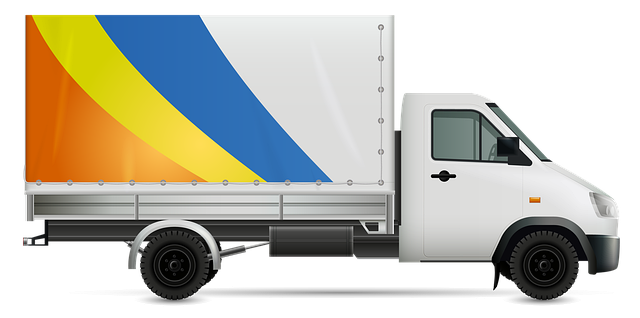Looking to register your car in California? This comprehensive guide walks you through every step, from understanding eligibility requirements to completing the DMV VIN verification process. We’ll show you how to gather essential documents, navigate the online or in-person registration process, and pay fees. By following these clear instructions, you’ll have your vehicle registered smoothly and efficiently, ensuring compliance with California’s regulations. Don’t miss our tips for a stress-free experience, including effective dmv vin verification methods.
- Understand Eligibility Requirements for Car Registration in California
- Gather Necessary Documents for Car Registration
- Perform DMV VIN Verification: Steps and Tips
- Complete the Online or In-Person Registration Process
- Pay Car Registration Fees and Obtain Your Vehicle's Registration
Understand Eligibility Requirements for Car Registration in California

Before registering your car in California, it’s crucial to understand the eligibility requirements set by the Department of Motor Vehicles (DMV). To start, your vehicle must be legally imported and comply with all state safety standards. Additionally, it needs a valid registration from its original state of issue. The DMV conducts a Vehicle Identification Number (VIN) verification process, which involves checking the VIN against national databases to ensure the car’s history is clear and it hasn’t been reported stolen.
A mobile VIN inspection or using a mobile vin verifier can streamline this step. These services allow you to obtain a reliable VIN check quickly, often right from your location. By ensuring your vehicle meets these criteria, including a clean title and no outstanding liens, you’ll be well on your way to registering your car with the California DMV without any hiccups.
Gather Necessary Documents for Car Registration

Before you begin the registration process, ensure you have all the required documents. The California Department of Motor Vehicles (DMV) will need several key pieces of information and papers to verify your vehicle’s details and ownership. One crucial step is the DMV vin verification, which involves checking the vehicle identification number (VIN). This process can be completed through a mobile vin inspection or by visiting a local DMV office for a standard vin inspection.
For a seamless registration experience, gather documents such as proof of ownership (a signed title), current vehicle registration (if applicable), valid identification like a driver’s license, and a current auto insurance policy. Additionally, have the vehicle’s VIN readily available, as it is a critical component in the verification process. Consider using a mobile vin verifier for convenience to streamline this initial step towards registering your car in California.
Perform DMV VIN Verification: Steps and Tips

To begin the car registration process in California, the first step is to undergo a DMV VIN (Vehicle Identification Number) verification. This crucial step involves ensuring that your vehicle’s details match those on record with the Department of Motor Vehicles. You can opt for a mobile vin inspection or vin inspection at a local DMV office.
The process is straightforward: visit the official DMV website to make an appointment, bring all necessary documents including proof of ownership and insurance, and take your vehicle for a quick check-up. During the dmv vin verification, the inspector will cross-reference the VIN with their records, inspect the vehicle’s overall condition, and confirm that it complies with safety and emission standards. This step is essential to prevent fraud and ensure a smooth registration experience.
Complete the Online or In-Person Registration Process

In California, registering a car involves either completing the process online or visiting a DMV office in person. The first step for both methods is to ensure your vehicle meets all legal requirements and has passed the necessary inspections, including a DMV VIN verification. This crucial step ensures that the vehicle’s identification number (VIN) is valid and matches the make, model, and year listed on the registration documents.
For online registration, you’ll need to access the California DMV’s official website and follow their detailed instructions. They provide a user-friendly interface where you can input your vehicle information, including the VIN, which can be easily acquired through a mobile VIN verification or inspection. In contrast, in-person registration requires gathering essential documents, making an appointment (if necessary), and visiting a local DMV office to submit your application and complete any additional checks.
Pay Car Registration Fees and Obtain Your Vehicle's Registration

After completing your car purchase, it’s time to register your vehicle with the California Department of Motor Vehicles (DMV). To do this, you’ll need to pay the associated registration fees, which vary based on the type and age of your vehicle. You can typically make these payments online, by phone, or in-person at a DMV field office. Once your payment is processed, the DMV will conduct a Vehicle Identification Number (VIN) verification to ensure the accuracy of the vehicle’s information. This step often involves checking the car’s history, including any previous accidents or outstanding issues.
To streamline this process, consider utilizing a mobile VIN inspection or mobile VIN verifier service. These services send a specialist to your location, allowing for a convenient and efficient VIN verification. By opting for a mobile solution, you save time and avoid the hassle of visiting a DMV office. This is especially beneficial if you’re busy or have multiple vehicles to register, ensuring a smooth and swift registration experience for all.
Registering a car in California is a straightforward process that requires understanding the eligibility criteria, gathering essential documents, and completing the registration form. A crucial step in this process is performing a DMV VIN (Vehicle Identification Number) verification to ensure your vehicle’s authenticity. Once all requirements are met, you can either register online or visit a DMV office. Remember to pay the necessary fees and keep your vehicle’s registration up-to-date for smooth sailing on California roads.
